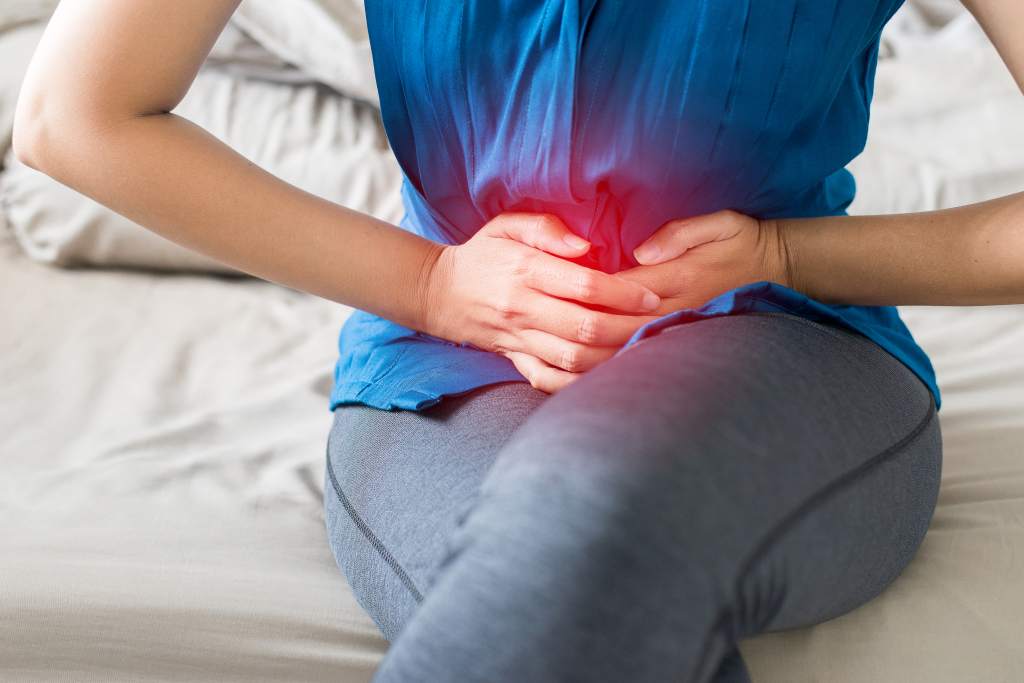Primary dysmenorrhea is caused by uterine contractility and hypersecretion of prostaglandins, especially F2 Alpha (PGF2-a) when women are menstruating. Primary dysmenorrhea is menstrual pain that arises and is felt in the absence of organic disease. In general, pain in women with primary dysmenorrhea reaches its peak on the first and second day of the menstrual cycle. Prostaglandin secretion is controlled by progesterone. When progesterone decreases, there will be an increase in the secretion of prostaglandin levels due to negative feedback. In addition, a decrease in progesterone will trigger an increase in pro-inflammatory cytokines during the menstrual cycle.
Based on world data, the incidence of primary dysmenorrhea reaches an incidence of 45% in fertile women and the highest incidence occurs in women aged 13-17 years. The phenomenon so far is the management of pain due to primary dysmenorrhea using non-steroidal anti-inflammatory drugs (NSAIDs). If the use of NSAIDs is always applied, it will certainly have an impact on health.
Alternative solutions need to be found to overcome this problem. One of the natural ingredients contained in fish oil is n-3 polyunsaturated fatty acids (PUFA). N-3 PUFAs are recognized for their ability to reduce inflammation. Our previous study reported that omega 3 was able to reduce pain intensity by decreasing levels of Tumor Necrosis Factor Alpha (TNF-a) in the blood after weight training. N-3 PUFAs are frequently utilized in the medical field to expedite the process of wound healing. In addition, the physical activity performed by women has the potential to increase progesterone hormone levels. It is important to understand the potential benefits of n-3 PUFAs and physical exercise in reducing the intensity of pain experienced by women with primary dysmenorrhea. These issues provide an opportunity to discuss them through a systematic review.
The type of research is a systematic review using comprehensive strategies such as searching for articles in research journal databases. The databases used are PubMed/MEDLINE, Scopus, Web of Science, and Embase. The populations analyzed in this paper are the potential of n-3 PUFAs and physical exercise to reduce primary dysmenorrhea. The inclusion criteria in this study were journals that discussed n-3 PUFAs, exercise, primary dysmenorrhea, and menstrual pain. The exclusion criteria in this study were disreputable international journals. Notes were compiled, titles and abstracts were screened, and full-text articles were verified using reference management software (Mendeley). A total of 3990 articles from the Pub-med/MEDLINE, Scopus, Web of Science, and Embase databases were identified. A further 8 articles that met all inclusion requirements or at least some of them were selected for this systematic review. For standard operationalization, this study follows the Preferred Reporting Items for Systematic Reviews and Meta-Analyses (PRISMA).
This review explains that N-3 PUFAs given at the right dose, around 1000 mg/day have the potential to reduce pain intensity by suppressing the production of pro-inflammatory cytokines and eicosanoids. Besides, N-3 PUFAs have the potential to prevent and reduce pain intensity by inhibiting prostaglandin synthesis. Progesterone is very important in women with primary dysmenorrhea in order to control prostaglandin secretion. This review explains that regular exercise with low to moderate intensity (30-75% of maximum ability) performed 3 times in 1 week can increase progesterone concentrations. Physical exercises that can be done to reduce pain intensity due to primary dysmenorrhea include stretching exercises, jogging, and yoga exercises.
Author: Novadri Ayubi, S.Or. M.Kes.
Read full article:
https://recyt.fecyt.es/index.php/retos/article/view/96629
Handayani, S.G., Ayubi, N., Komaini, A., Lesmana, H.S., Kusnanik, N.W., Herawati, L., Ardha, M.A.A., Nurhasan, N., Kafrawi, F.R., Putri, D.R.S., Kusuma, D.A., Putra, A.Y., 2023. N-3 polyunsaturated fatty acids (PUFAs) and physical exercise have the potential to reduce pain intensity in women with primary dysmenorrhea: Systematic Review. Retos, 48, 106-112.









